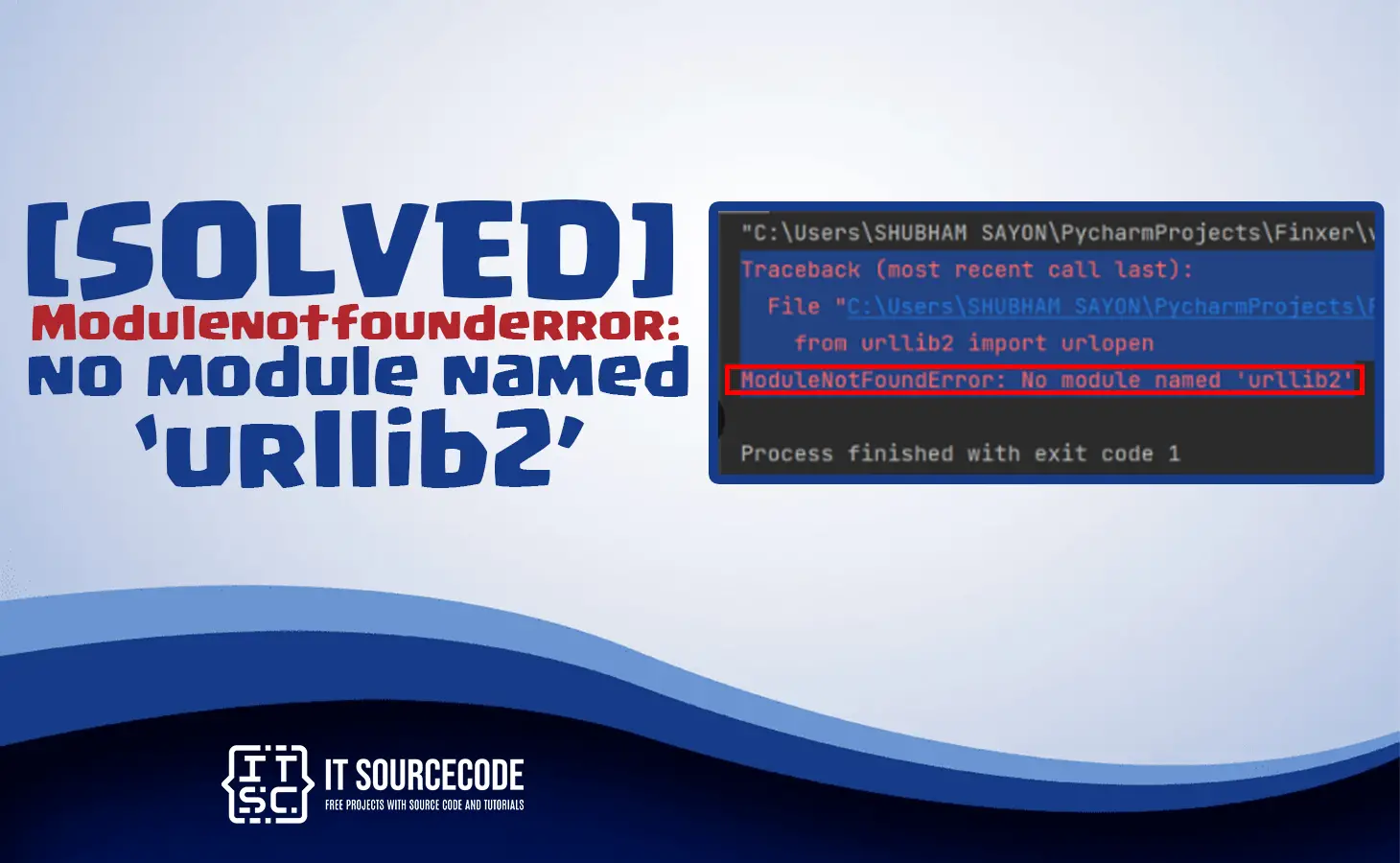In this article, we will determine how to solve Modulenotfounderror: no module named ‘urllib2’ error.
We will provide various solutions to resolve it along with understanding what is urllib2.
What is Modulenotfounderror: no module named ‘urllib2’?
The Modulenotfounderror occurs when a program tries to import a module that is not installed or present in the Python environment.
Additionally, the error occurs because the urllib2 module has been split into urllib.request and urllib.response in Python 3.
Furthermore, the following are additional various reasons why this error occurs, such as:
- The urllib2 module is not installed in the system.
- The program is running on an old version of Python that does not support the urllib2 module.
- The program is running on a different operating system that does not support the urllib2 module.
What is Urllib2 module?
urllib is a package which collects several modules in working URLs, the following are urllib packages:
- urllib.request is for opening and reading URLS.
- urllib.error is to contain the exception raised by the urllib.request
- urllib.parse is for parsing URLS.
- urllib.robotparser is to parse robots.text files.
How to fix Modulenotfounderror: no module named ‘urllib2’
Now here are the following solutions which you can use to fix this error.
- Solution 1: Use import urllib.<module>
Since the urllib2 has been crossed several modules in Python 3 namely urllib.request and urllib.error.
As a result, the import failed to locate any module named urllib2.
So here is how to import this module with the proper function.
1. Usingurlopen()function, then you have to import urllib.request module.
The output would be like this:
2. If you are using theurlparse()function, then you have to import urllib.parse module.
Example:
See the output below:
- Solution 2: Fix Using try and except block
If you are unsure which version of Python is being used and want your script to work with both Python 2 and Python 3, include a try and except block.
Here is the syntax on how to do it:
So for instance we will use the urlopen() function, and we will use the try and except block as follows:
The code above explains that for the Python 2 import module, and assign it an alias name within a try block.
In the preceding example, we named an alias req.
Then Import the Python3 module and give it the same alias name as in the try block in the except block.
The alias name req will be assigned to any import statement that is used. We can use this alias to access the program’s functions.
So here is the output of the code above:
- Solution 3: Using Python 2to3 Tool
When you upgrade to Python 3, you can use the 2to3 module to automatically update your import statements to Python 3.
To do this do the following commands:
Open your terminal and execute the following command to install 2to3.
pip install 2to3
pip3 install 2to3
python -m pip install 2to3
python3 -m pip install 2to3
py -m pip install 2to3
Then you can update theurllibimport statements with the subsequent command.
2to3 -w example.py
Make sure to replace example.py with the actual name of the file.
Now use the following command to move an entire project from one directory to another.
2to3 –output-dir=python3-version/mycode -W -n python2-version/mycode
The output directory will store your Python3-compatible code.
Conclusion
This article already provided you with the solution to the error Modulenotfounderror: no module named ‘urllib2’.
If you follow the solution, it will solve the error that you are facing right now. It is a simple solution, yet literally effective in solving the `error.
We hope that this article has provided you with the information you need to fix this error and continue working with Python packages.
If you are finding solutions to some errors you’re encountering we also have Modulenotfounderror no module named tensorflow contrib.








